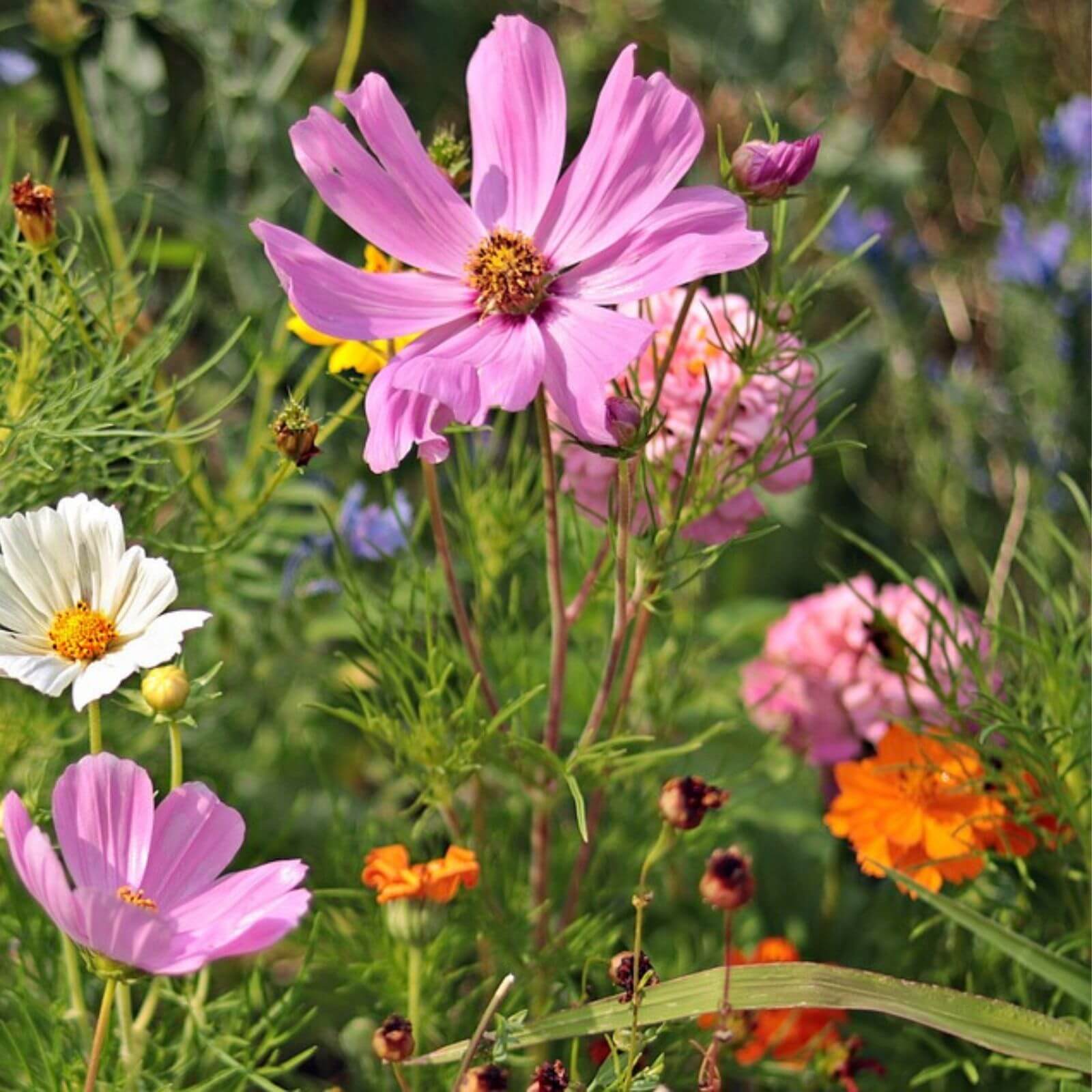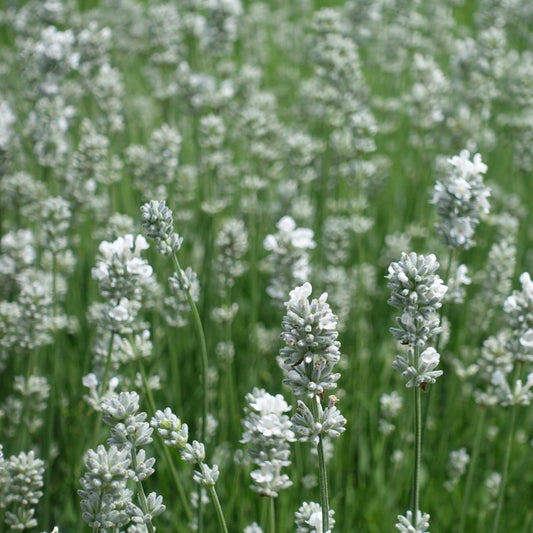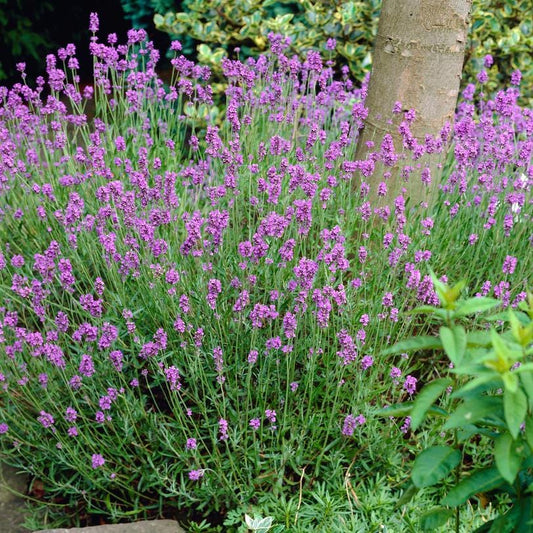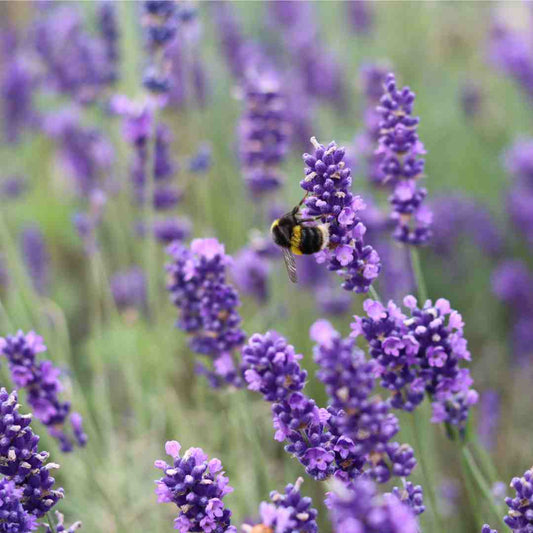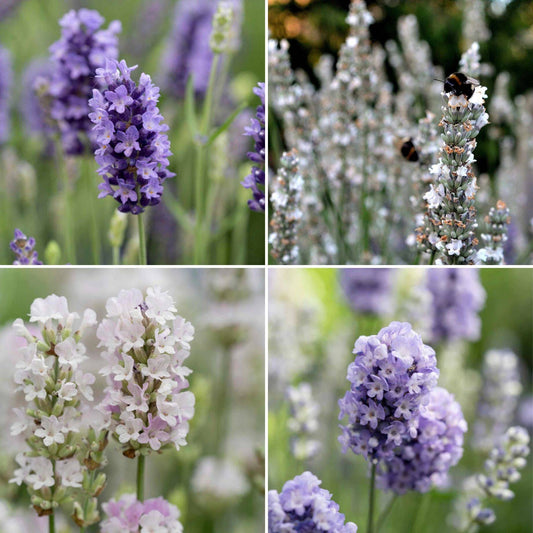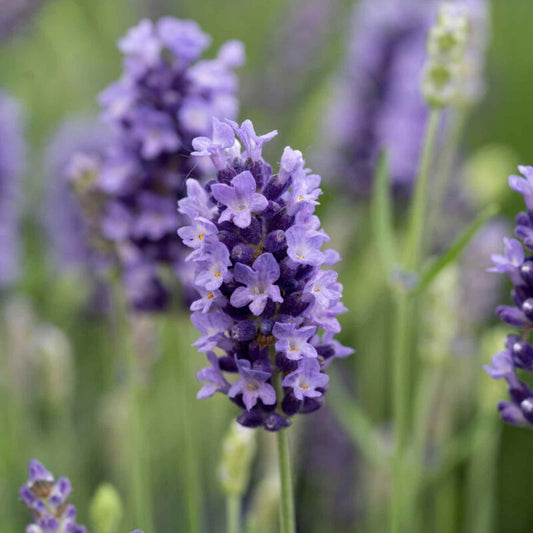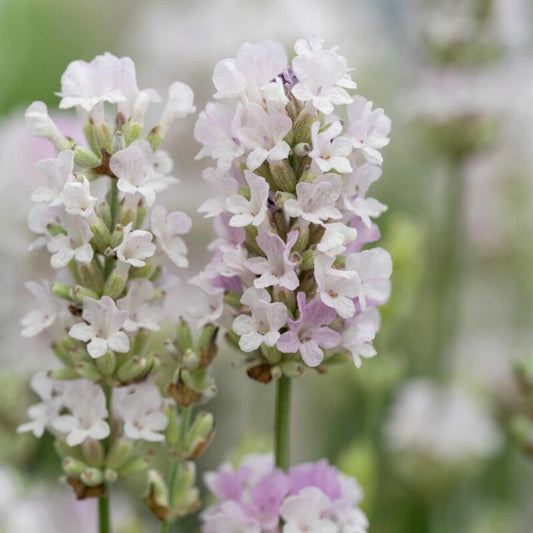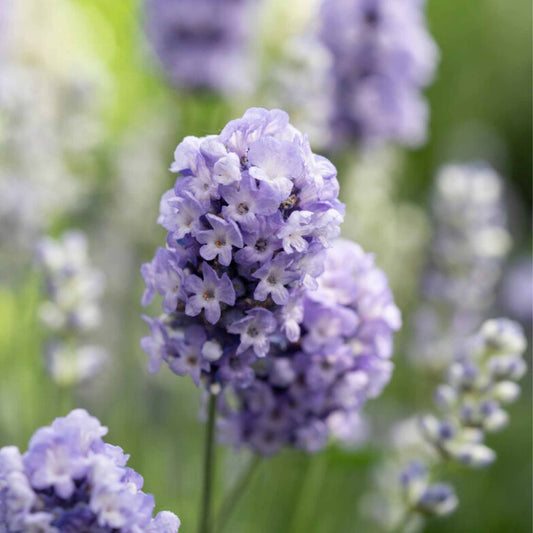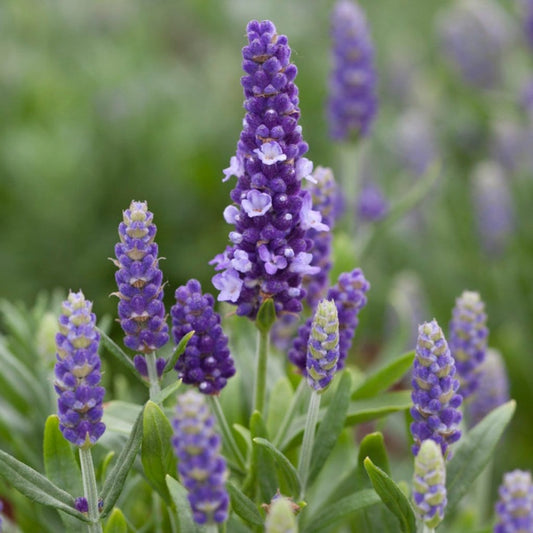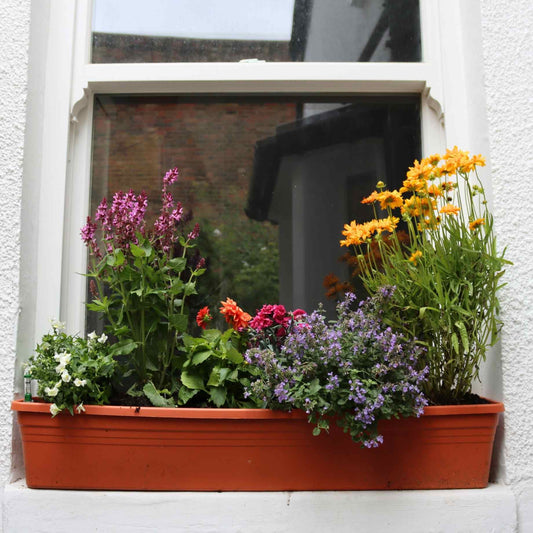Growing Lavender: Complete UK Guide
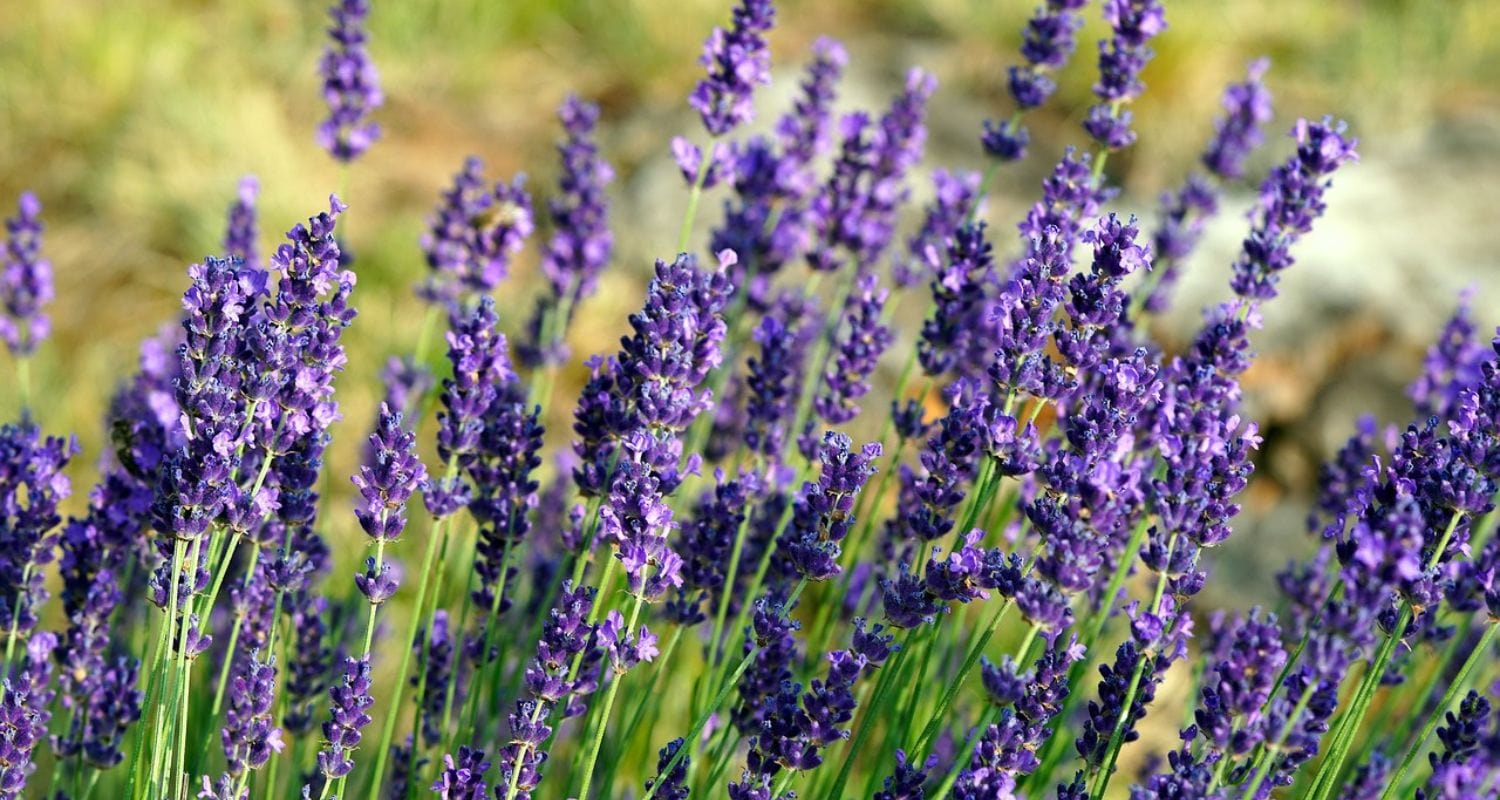
Can you even have an English summer without lavender? *Calls legal department* Thought not. Stems of fragrant blue buds swaying in the warm summer breeze while bees buzz from flower to flower – who’d be without it? Not me, that’s for sure.
As well as being irresistible to people and pollinators alike, hardy perennial lavender is one of the most versatile and low maintenance plants you can grow. If you’re adding some new lavenders to your garden this year, help them grow into their best selves with this complete lavender grow guide. Just add a deckchair and an iced tea and you’re sorted!
Jump to:
- How to choose
- Best time to plant
- Where to plant
- How to plant
- Your growing guide
- Does lavender spread?
- Lavender pruning
- Troubleshooting lavender problems
How to choose your lavender
The first thing you’ll need to do is choose which kind of lavender is best for your garden. If you’re in a colder part of the UK you’ll do best with English lavenders, as they’re hardier and better suited to our climate.
For sunnier spots like a sheltered patio, you can add French, Spanish or Italian lavenders to your collection - but you may want to plant them in pots so that these less hardy varieties can be brought under cover during the winter.
Compact or dwarf lavenders are what you need for path edging or the front of borders, whereas for a wildlife garden, a mid border position or an informal prairie or meadow planting scheme, you’ll want a taller growing variety. All lavenders will grow well in pots.
You may think the colour choice is straightforward, but lavender doesn’t just come in a range of blues and purples any more, but in pink and white too so you can coordinate it with a wide variety of other flowers in your garden.

The best time to plant lavender
The best time of year to plant a lavender is in the spring, when the ground is warm and the plant can put its energy into developing a good root system rather than dealing with any extremes of temperature, but planting in summer is also fine.
If you can, avoid planting lavender in winter as these otherwise hardy plants can’t stand being waterlogged and young plants may not yet have a mature enough root system to deal with the wet weather.

The best place to plant lavender
What all lavender plants need first and foremost is lots of sun. Choose a warm planting position where they’ll get at least 6-8 hours of direct sunlight daily and make sure the soil is well draining to avoid the plants getting too wet.
The best soils for lavender are dry, sandy, chalky or poor (ideally with a pH level of 6.7-7.3 if you’re into soil testing) so the usual advice to enrich the soil by adding compost or manure definitely does not apply here!
Don’t despair if you have clay soil, though, as you can make this suitable for lavender by mixing in some horticultural grit to improve the drainage. Lavender is such a versatile plant that it’ll go well almost anywhere in the garden – plant it in pots, borders, under trees, along a path edge or as companion plants to your vegetable plot.

How to plant lavender
Once you’ve identified the perfect sunny spot for your lavender, dig a hole in the soil large enough for the plant’s roots to spread out, loosening them gently if they’ve coiled around in the nursery pot.
Put your plant in the middle of the hole and fill in the soil to the same level the plant was in its pot, then firm down the soil around the plant and give it a little water.

How to grow lavender
Lavender is a low maintenance plant with excellent drought and cold tolerance once it’s established – follow these care tips to give your plants the best possible start.
Watering lavender
Water your lavender regularly when it’s newly planted, but bear in mind that these plants are drought resistant once established, do best in a slightly drier soil and can succumb to root rot if they become waterlogged.
Mature lavender plants (one year old and over) in the ground will only need watering after a prolonged dry spell, but those in pots should still be checked regularly, as the soil in pots tends to dry out more quickly.
Feeding lavender
Or not, in this case! Lavender prefers a soil that is only moderately fertile, so you won’t need to feed it at all. In fact you should avoid doing anything that will enrich the soil, such as mulching with compost or manure, as a high nutrient level will actually harm the plants.
Growing lavender in pots
Lavender is an ideal plant for growing in pots, as it stays compact and benefits from the warmth and dryness that a pot can provide. If you’re growing the more tender, non-English varieties, this also ensures that your plants will survive the winter, as you can move them under cover or wrap them more easily. Terracotta pots are a traditional choice, but lavender also looks striking in a more contemporary monochrome coloured container.

Does lavender spread?
Lavender isn’t one of those plants that will run wild in your garden, so you won’t have to worry about it outgrowing its space. They tend to stay quite compact, so it’s good news if you’re growing them in pots as you won’t need to repot your plant too often, if at all.
Typically, a lavender plant will grow to a spread of 30-90cm (but check the measurements for your particular plant) so you should plant them their mature width apart if you’re planting more than one.
If you do want to increase the number of lavender plants in your garden, you can take cuttings in late summer by cutting off 10cm lengths of stem with signs of new growth at the tips. Remove most of the lower leaves from your cutting, dip the cut end in rooting hormone and plant it about 1cm deep into potting compost.
Place your cuttings in a warm, light place such as a windowsill or greenhouse, then when they grow large enough, harden off your new lavenders before planting them outdoors.

Pruning lavender
Pruning isn’t usually the most enjoyable gardening task, but when the plant smells this good AND you can use the trimmings in everything from shortbread to soap, trimming your lavender is well worth making time for. The way you prune your lavender depends on which type you have.
Pruning hardy lavender
English and hybrid lavenders should be pruned after they’ve finished flowering (usually around August). You can cut them back pretty hard but avoid pruning any old wood, as this can result in fewer flowers the next year. If there are any new green shoots, these should be left alone too as removing these can injure or even kill your plant.
Pruning half hardy lavender
If you need to prune French or other Mediterranean lavenders (Lavandula stoechas or Lavandula dentata) you can do this after they’ve finished flowering, but avoid pruning them any later than early September.

Lavender troubleshooting
Lavender plants are one of the most trouble-free plants in the garden, and you won’t usually have to worry about pests and diseases. Any issues that do arise are likely to be minor or easily preventable, so when I say ‘trouble’, I’ll freely admit I’m reaching here…
My lavender isn’t flowering
If you’re not getting the abundance of flowers you expect from a lavender, the problem is most likely to be with the growing conditions. Avoid overwatering your plants, prune them every year and check the soil - if it feels waterlogged, it might need replanting in drier, better draining soil.
My lavender is drooping
Most plants will droop if they get too little water, but it’s the reverse with lavender. Droopy foliage in these plants can be a warning sign of root rot, caused by the soil being too soggy. The best thing to do here is to reduce watering or replant it in drier soil.
My French lavender is dying
Is it outdoors? Chances are it’s too cold, as these lavenders aren’t fully hardy. If it’s in a pot, bring it indoors until the weather warms up, or if it’s planted in the ground, protect it with horticultural fleece, a cloche or bubble wrap until the cold snap has passed.
Something’s eating my lavender
Not many pests enjoy eating lavender – that’s what makes it such a good companion plant, but if you do see some nibbled leaves, the culprit is probably rosemary beetles.
Small numbers of these insects won’t cause anything more than cosmetic damage, but if you’re worried, you can shake or pick off the bugs or even better, reduce their numbers by encouraging predators such as birds, frogs and ground beetles who will take care of them for you.
There’s cuckoo spit on my lavender
Cuckoo spit, as it’s popularly known, is blobs of foamy, frothy liquid on the stems of plants. It’s caused by the young of sap sucking insects called froghoppers, AKA spittlebugs, and has absolutely nothing to do with cuckoos. If you find this on your lavender, don’t worry – it’s totally harmless and you don’t need to do anything.
Last updated: 03/06/2024


